making books
It’s funny that I have written a fair few books, strung together thousands and thousands of words and taken many a photo to go with them, and now I love making books with blank pages. This is what I’ve been doing this week, enjoying the slow process of folding, covering, and stitching books for someone else to fill with their own words, pictures, doodles, scribbles, or Wordle workings. I don’t care if the pages are folded over, torn out, made into bookmarks or shopping lists, or used for games of Boggle. It’s the using that matters, and I think the very blankness of a hand-made book is an invitation to creativity.
I knew for a long time that I really, really wanted to be able to produce a book structure on my own (and now wonder why every child isn’t taught how to make basic books at school). I have always been fascinated by the power of the book, and the idea that if you can bind pages into a whole, you have the ability to distribute ideas. Learning about Soviet samizdat, or dissident self-publishing, with its often crudely reproduced texts and simple bindings, impressed upon me that fact that you don’t need to be particularly skilled or even commissioned to make a book. You can just make one. At the most basic level, all you need is paper and the means of holding it together.
I started learning a few years ago at the London Centre for Book Arts with a couple of their excellent introductory courses, but then almost gave up. Taking up new skills later in life requires persistence if you are not to feel discouraged by the fact that you/I may take ages to grasp them. But the lockdowns proved to be the perfect time to start again; a ten-week City Lit Zoom beginners’ bookbinding workshop with Ina Baumeister on Sunday mornings was particularly useful, and Mylyn McColl is a lovely, patient tutor.
It took me a while to produce books I was happy with. There’s a lot to practice, different materials to understand, new actions such as folding, tearing, pressing, knotting, creasing, covering, pasting, and so many book forms to consider. Call me naive or just daft, but I was shocked to discover that traditionally much of the skilled work in a book is hidden. Lovely stitches such as butterfly, link, and kettle which hold the pages together are invisible in hardback books while the folded sections of the spine are glued over and covered in mull and brown paper. I have made hardback books but, as with my quilts, I’m all about visible stitching. And colour, pattern, tactility, practicality and an invitation to use. I like my books to ‘show signs of having been made by a human’, as Alison Britton says, and want to expose the work, the workings, the connections, the way a book opens, stays together, keeps the pages in order, and houses and protects them.
As before, I don’t have a studio. I occupy one end of our long living room from where I can see the washing on the line, the pots of flowers on the terrace, hear the postman, and have easy access to the kettle. My creative domestic landscape hasn’t changed and I make do what I have in terms of space and kit; sheets of paper and card lie under a settee, my sewing machine acts as a press when placed on top of two wooden boards, rolls of book cloth sit in a willow basket, and a glass paperweight does duty as a page weight. I do have a Studio Pass for the LCBA so I can use their lethal board chopper (shades of the Monty Python ‘Salad Days’ sketch), buy materials and tools, experiment with various pieces of bookbinding equipment, and generally enjoy being with other bookmakers.
I’m really only just beginning to understand paper - so much choice - but I have worked out which decorative papers and threads I like. The process of putting together patterns then choosing the right thread is very much like the one I used for quilting. And just as I always wanted to create a surprise when the back of a quilt was shown, I love having something unexpected on the inside covers.
In fact, it’s all very patchworky as the back and front covers are often different, and the section wrappings which show on the spine are all made from leftovers.
I like thick, colourful linen threads from Sajou, my papers are a mix of Cambridge Imprint, chiyogami, and others picked up here and there, and the bookcloth I prefer is mostly from Shepherds.
Although I am still a little ambivalent about it, I’ve considered the possibility of going further and venturing into the world of artists’ books, and have a little stash of ideas ready to be translated into more conceptual and experimental books. We shall see. Once you reframe the book, all sorts of things can happen.
endnote i
Like so many creative activities, bookmaking is wonderfully absorbing, almost absorbing enough to block out the outside world, but not quite. This newsletter is a parallel to the reality of what’s happening here at the moment. I’m not going to be writing about all that, but it’s enough to say that atm my texts mostly comprise FFS, WTF, WTAF, 😡, and 🤬.
endnote ii
For some true escapism, I recommend a couple of hours in a dark cinema watching Mrs Harris Goes to Paris. Fabulous Frenchness, fun, frocks and flowers.
Bon dimanche!


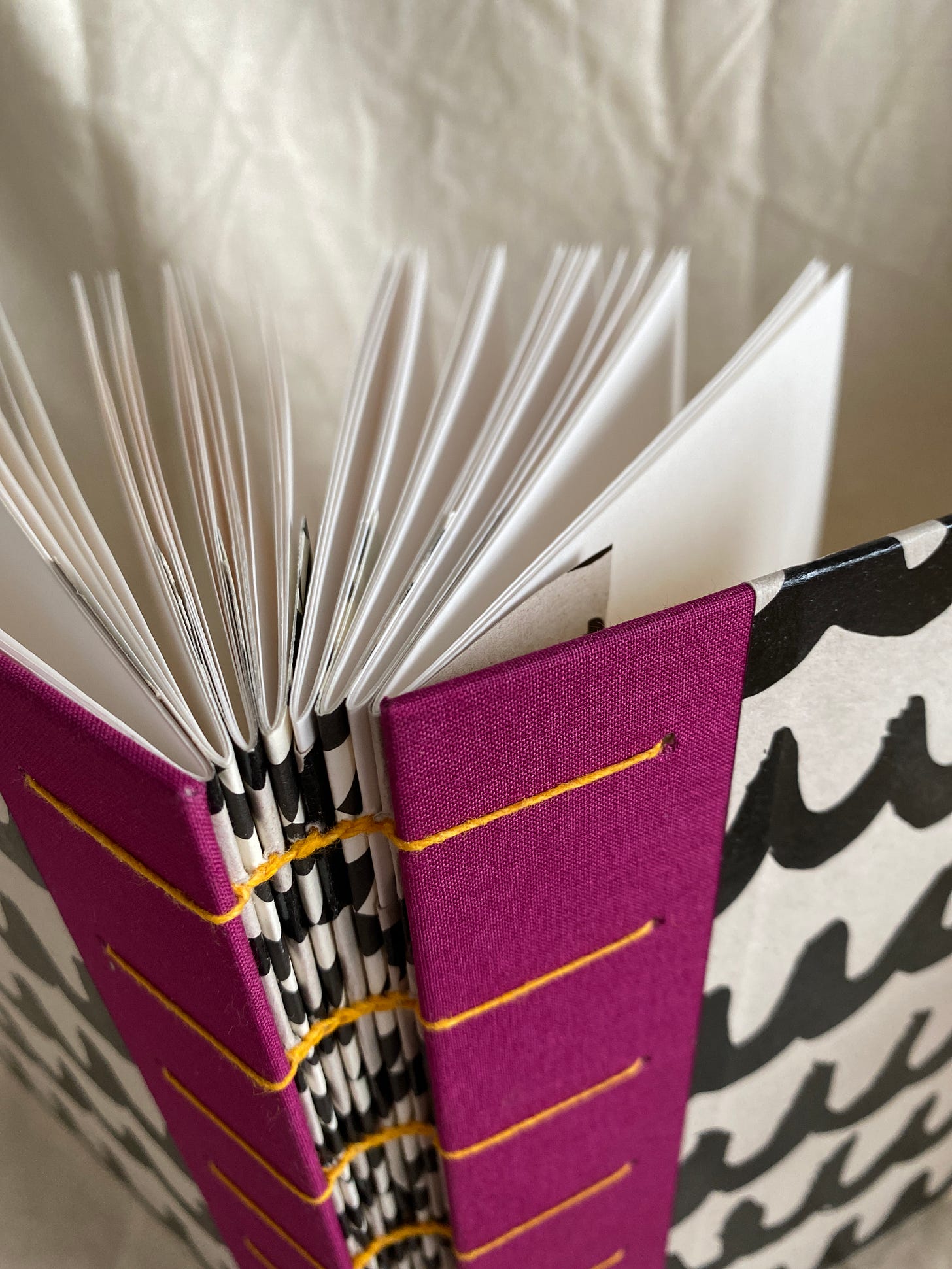
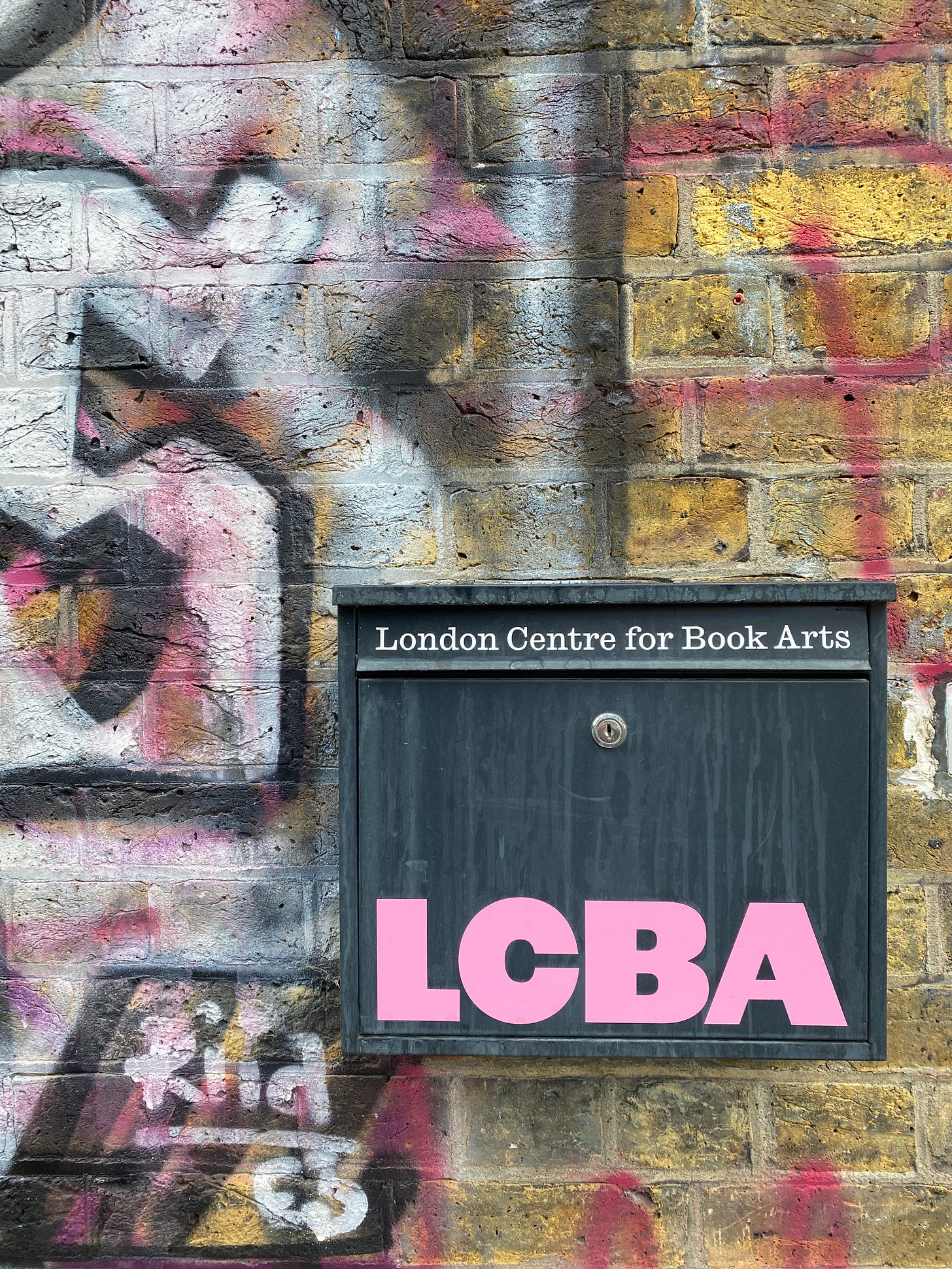
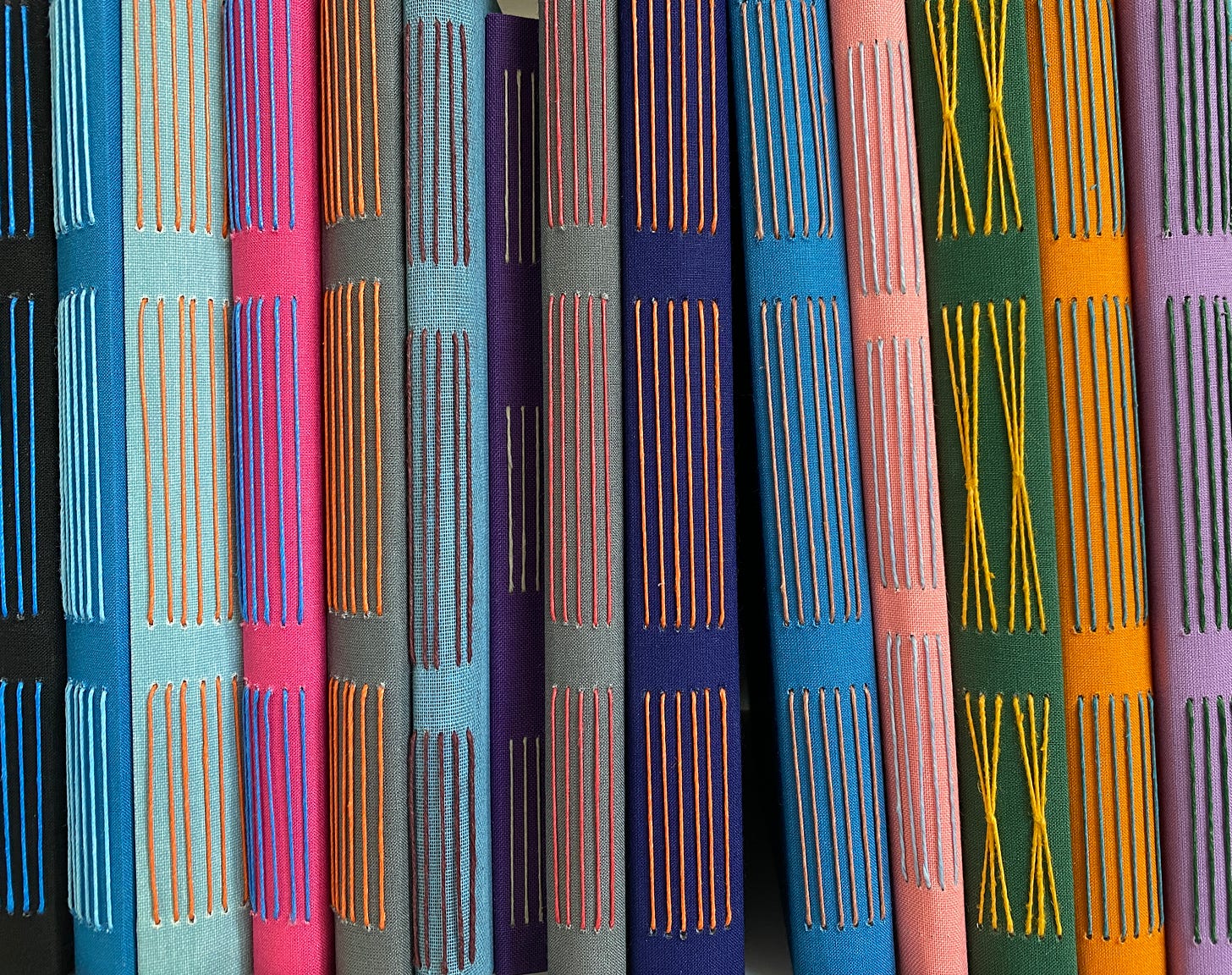
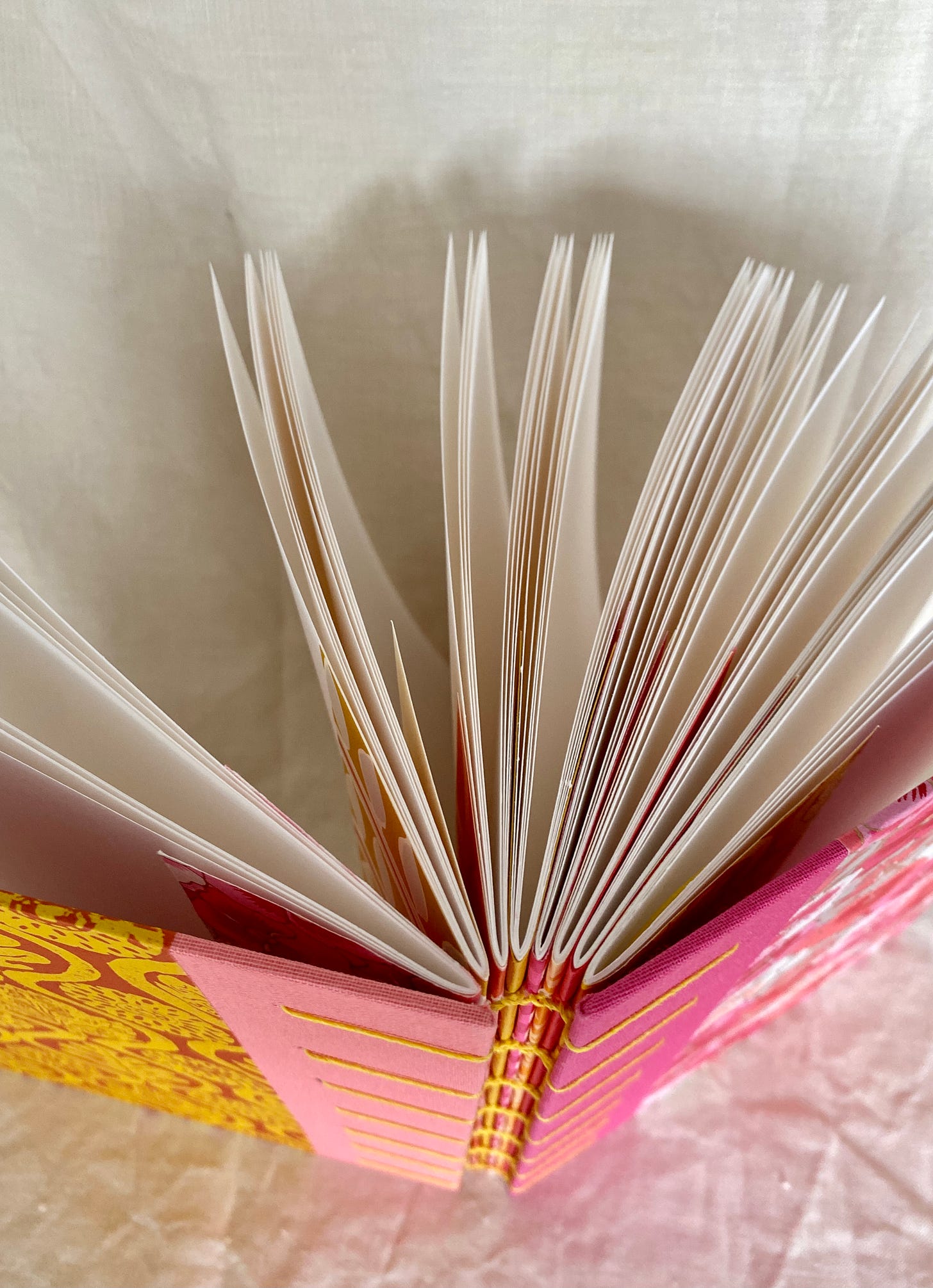

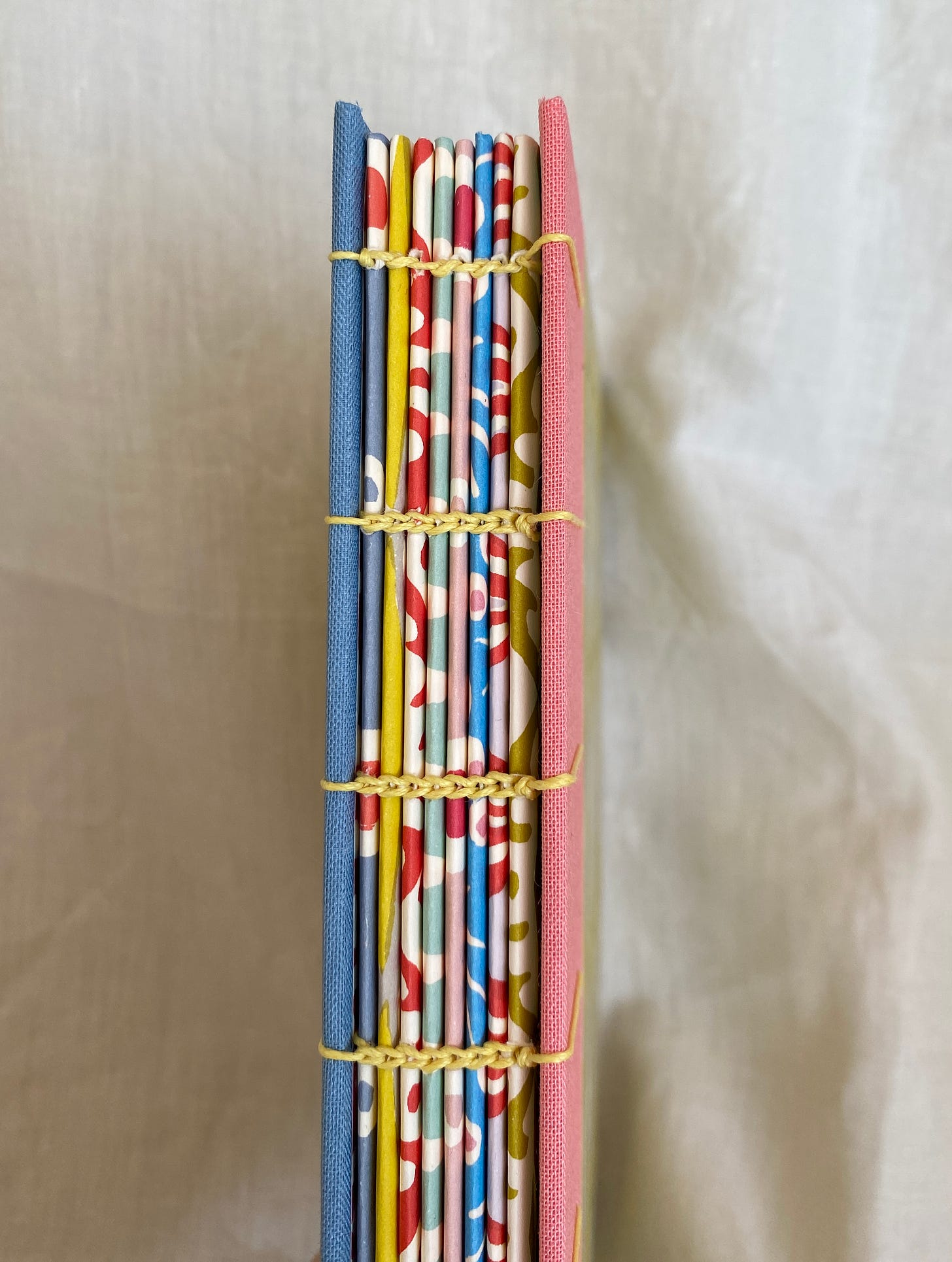
Loving your use of color and patchwork to make a book that could be full of the same. And yes, Mrs Harris was so very lovely.
As always your words are perfect. Thank you, Jane for being a calm voice in the storm that is our present circumstance.